Photo Page 1992A major lateral eruption of Mt. Etna started in mid December 1991, continued with high effusion rates (between 10 and 30 cubic
meters per second) until the end of May 1992, and then with minor effusion rates (lower than 5 cubic meters per second) until March
1993. It covered the whole southern half of Valle del Bove with fresh lava up to hundreds meters deep, releasing one of the largest
amounts of lava in known history, close to half a cubic kilometer in volume. The effusive vent was located at about 2200 m.a.s.l. on
the south-western rim of Valle del Bove. This eruption is also famous for having threatened the village of Zafferana Etnea. Several
attempts were made by the Civil Protection to divert the lava flow.
Marco Fulle observed the eruption both in January and in May 1992. To give a sense of the perspective, camera lens focal lengths are
given (i.e. f=28mm). As usual the pictures on this page link to larger photos (about 40 to 100 KB). |
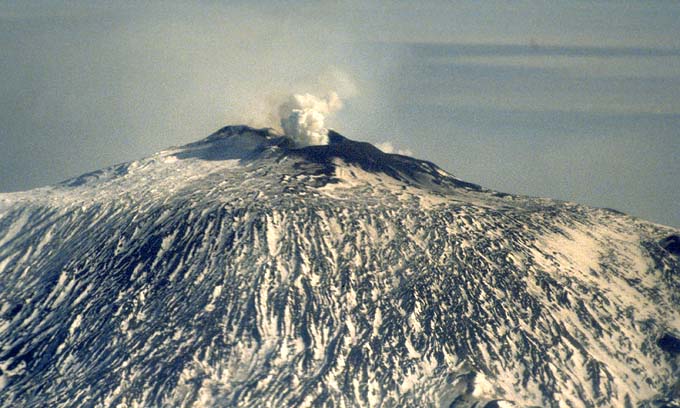 4 January 11h local. f=135mm from Alitalia flight. Etna summit seen from W with Bocca Nuova crater vigorously steaming. | 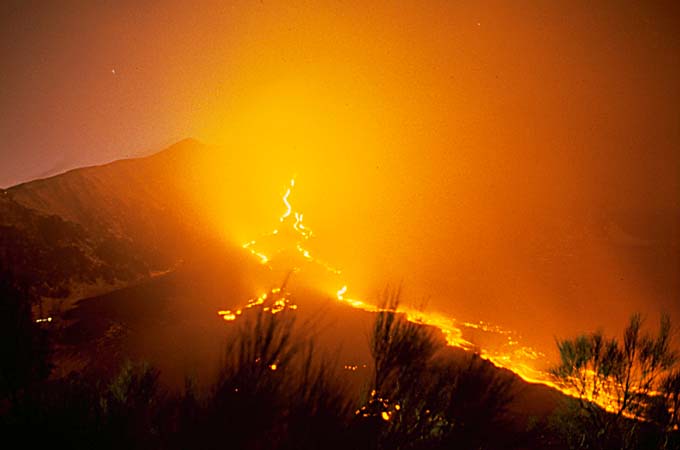 4 January 17h local. f=28mm from M. Zoccolaro. The vents of the lateral eruption and the lava flow about 4 km long flowing in Valle del Bove towards Zafferana Etnea. | 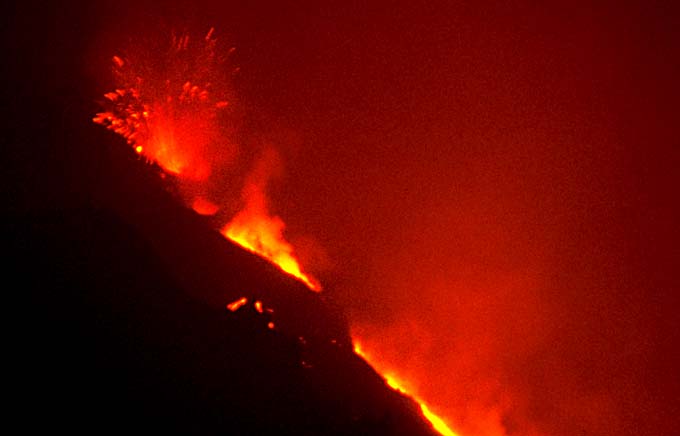 6 January 18h local. f=135mm from Schiena dell'Asino. Strong explosion at the vents on the flank of Valle del Bove. | 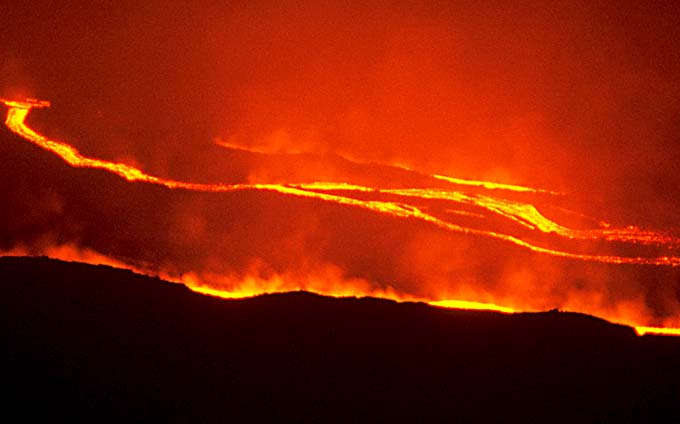 6 January 18h local. f=135mm from Schiena dell'Asino. Lava flows in Valle del Bove about 4 km long. |
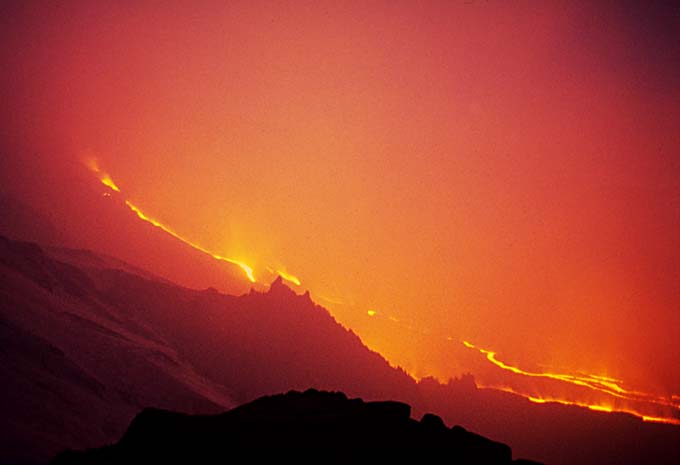 6 January 19h local. f=28mm from Schiena dell'Asino. The snow on the Montagnola slopes is brightened by the lava light. | 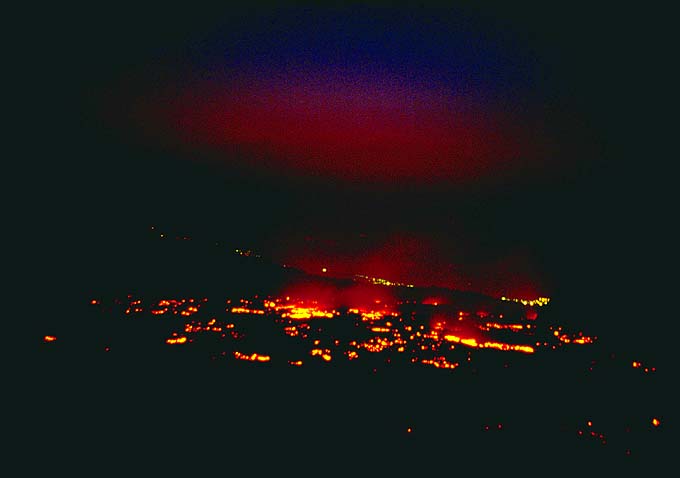 17 May 4h local. f=28mm from M. Pomiciaro. Ephemeral vents in Valle Calanna release minor flows. Zafferana Etnea in the backgorund. Dusk over the Ionian Sea. | 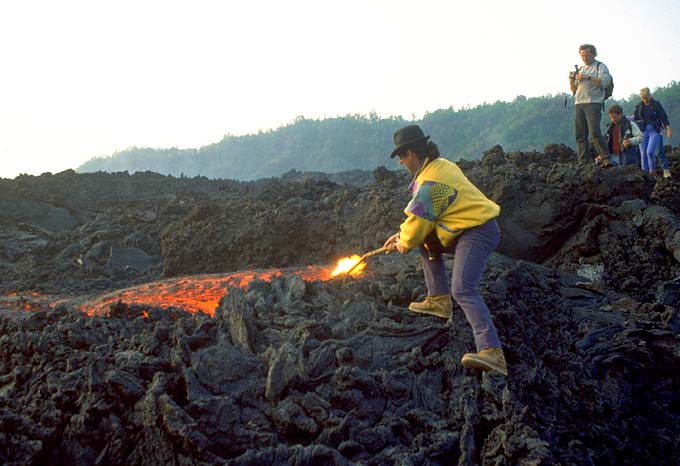 17 May 7h local. f = 28mm from the lava flow in Val Calanna. Making a lava ashtray in an active pahoehoe lava flow. | 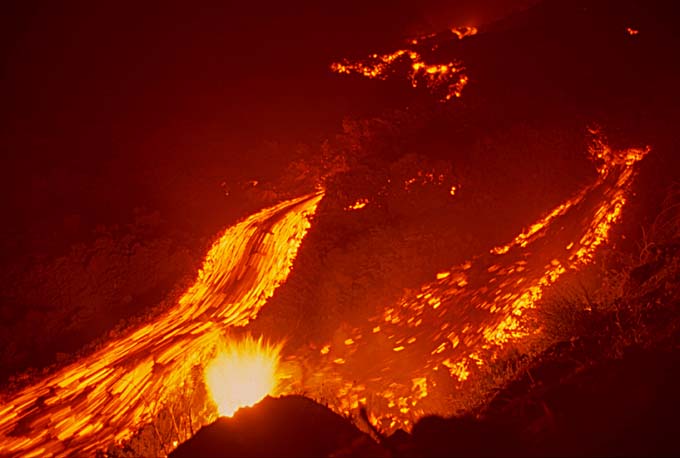 19 May 1h local. f=28mm from Piano dell'Acqua. Two lava flows exit from two ephemeral vents at only 1 km from Zafferana Etnea. In the foreground, a bush fires when reached by the flow. |
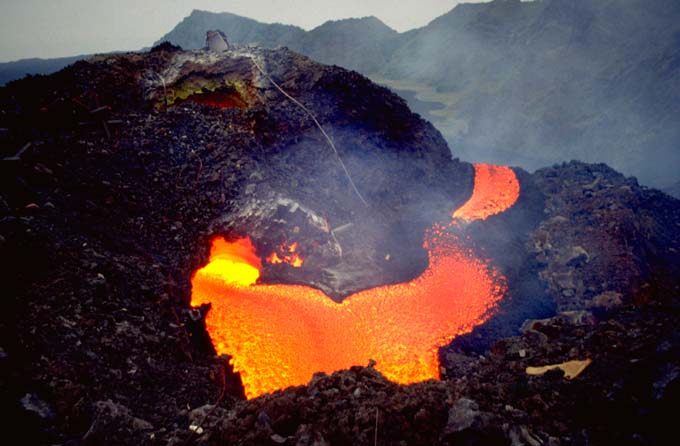 24 May 17h local. f=28mm in Valle del Bove. The lava flow exit from a tunnel 500 m from the eruption vents. The main flow goes towards the left in another tunnel. The flow going to the right is an artificial one, created by caterpillar excavations the day before. | 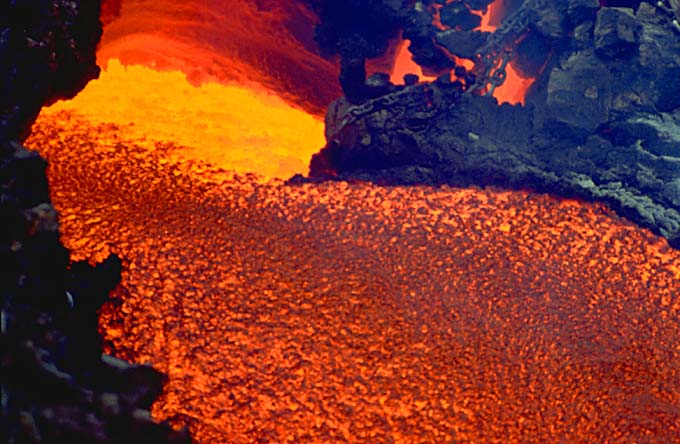 24 May 17h local. f=135mm in Valle del Bove. The main lava flow is here seen from the same lava bridge of the left photo. Note the lava stalactites on the tunnel top, due to remelting of the lava tunnel top by the high temperature. | 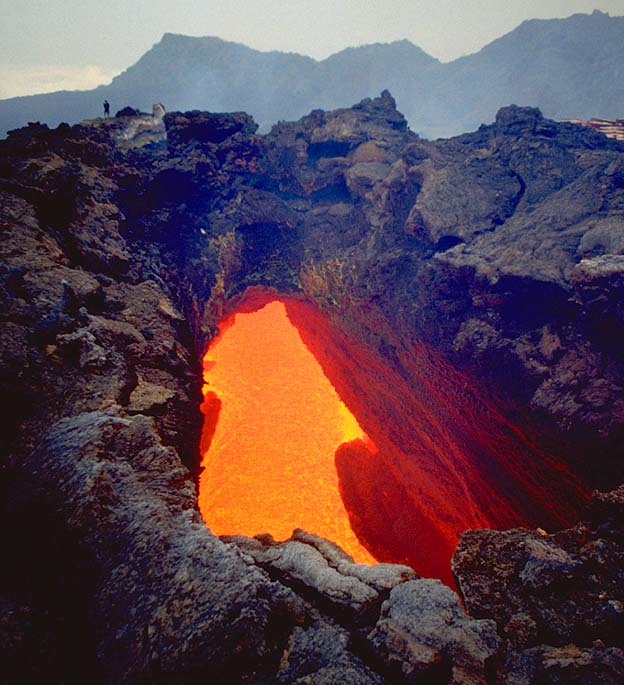 24 May 18h local. f=28mm from lava flow. Another tunnel skylight even closer to the eruption vents, showing almost all the huge lava flow: the man on the top left gives the incredible scale. M. Zoccolaro and M. Pomiciaro on the background. | 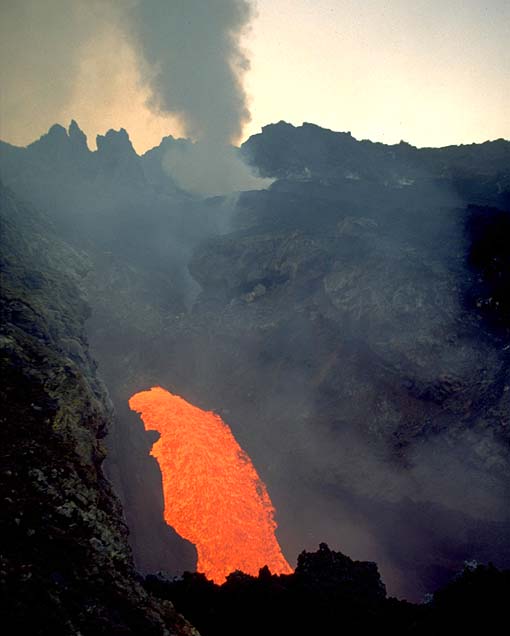 24 May 19h local. f=28mm in Valle del Bove. The vents of the eruption. The steam exits from the degassing vents, while below a huge lava cascade falls towards the observer. |
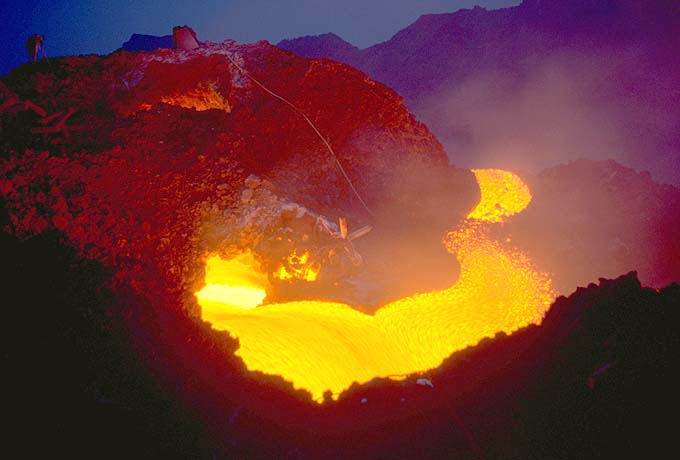 24 May 20h local. f=28mm in Valle del Bove. The twilight allows us to use a longer exposure, which enhances the flow of the lava exiting from the tunnel below the observer and dividing into the natural (left) and artificial (right) flows. | 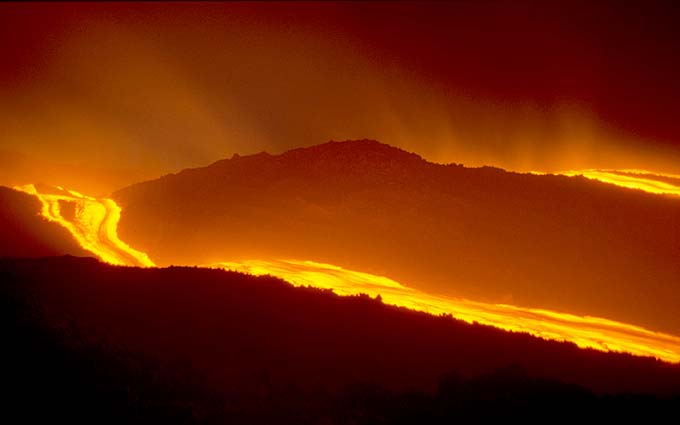 24 May 21h local. f=28mm in Valle del Bove. The artificial lava flow subdivides into several minor flows reaching the observer. | 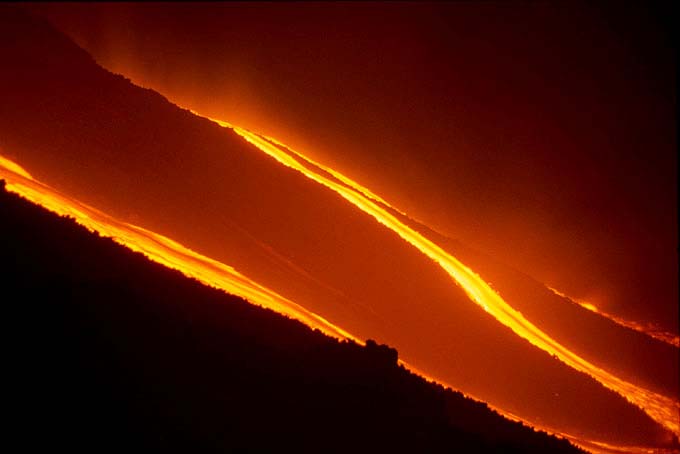 24 May 21h local. f=28mm in Valle del Bove. The same flows reach the bottom of Valle del Bove. | 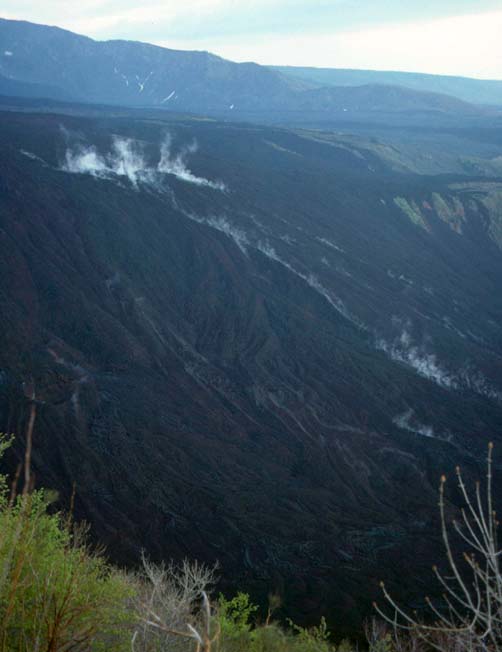 October 1996 f=24mm from M. Zoccolaro. Amazingly, three years after the eruption has ended residual heat in the flows is still big enough to generate steam after rain has fallen on the lava. Photo J. Alean, all others by M. Fulle. |
|